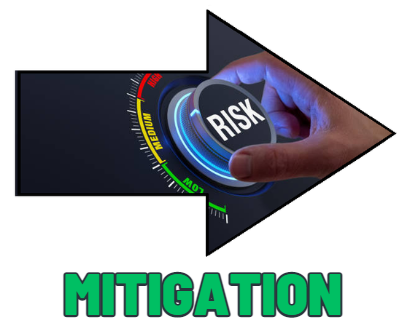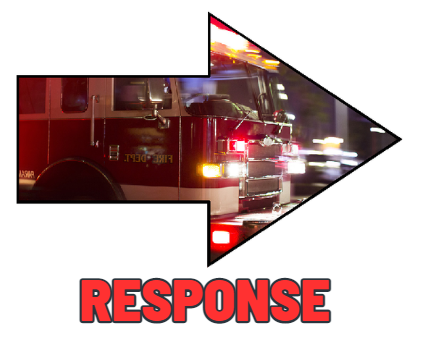The primary mission of Harnett County Emergency Management is to prevent injuries, save lives, and reduce property damage through the all-hazards, four phase approach of emergency management: |
|
Emergency managers think of disasters & emergencies as recurring events with four phases: Mitigation, Preparedness, Response, and Recovery. The significance of the emergency management cycle is that all communities are in at least one phase of emergency management at any time. The terms emergency and disaster often are used interchangeably. This common use of terms can be confusing. It is easiest to understand the terms emergency and disaster as being at two ends of a scale, in which the size of an incident and the resources to deal with the incident are matched to varying degrees. At one end of the spectrum, emergencies are usually small-scale, localized incidents which are resolved quickly using local resources. However, small-scale emergencies can escalate into disasters when there has been inadequate planning and wasteful use of resources. At the other end of the spectrum, disasters are typically largescale and cross geographic, political, and academic boundaries. Disasters require a level of response and recovery greater than local communities can provide.
Harnett County Emergency Management works to make plans and provide resources to protect our citizens from the hazards that threaten our community. Mitigation activities, preparedness plans, response to emergency scenes and recovery operations are part of our daily assignments to assure we are prepared to serve our citizens. On a daily basis, we work with our county government, law enforcement, fire departments, social services, health department, North Carolina Emergency Management and FEMA to assure we have the training, experience and equipment to assist our partners with managing the emergencies that affect our community.
The Emergency Management structure that exists today in the United States has its origins in the civil defense efforts that began after World War II in response to the possibility of a nuclear attack. In the 1960's the field of emergency management began expanding, and by the 1980's the focus had widened to the multi-hazard approach that prevails today. In 2001, in response to the September 11th terrorist attacks, the field of emergency management expanded its scope to encompass terrorism readiness and response. Today, Harnett County Emergency Management encompasses a wide range of disciplines in preparedness, response, recovery, and mitigation. Harnett EM currently employs the most state-of-the-art equipment keep Harnett County residents and visitors safe, such as Unmanned Aerial Vehicles with both zoom and Forward Looking Infrared capabilities. We are here to serve you in your time of need!
LEARN MORE ABOUT THE PHASES OF EMERGENCY MANAGEMENT CYCLE
Click on Any Phase /Arrow to Learn More Information
 |
 |
 |
 |
Still confused? Watch this short video by the NY-NJ-CT-PA Regional Catastrophic Planning Team to better explain what emergency managers do!

